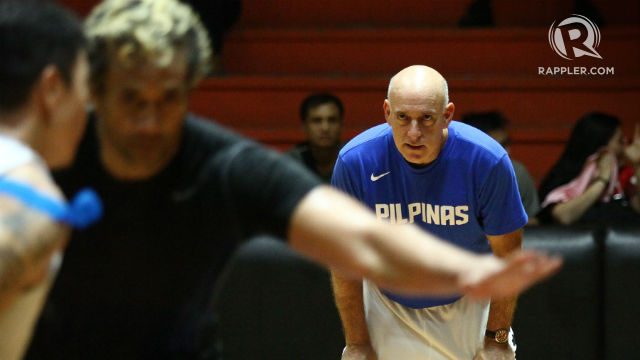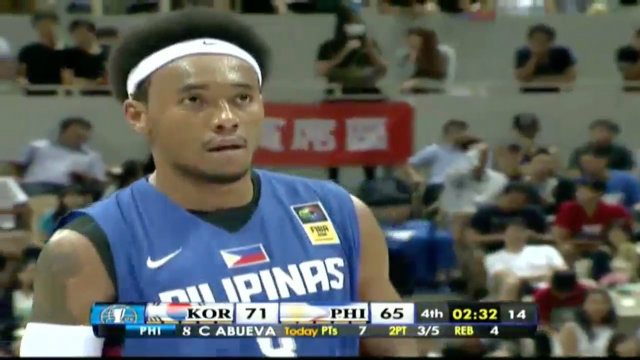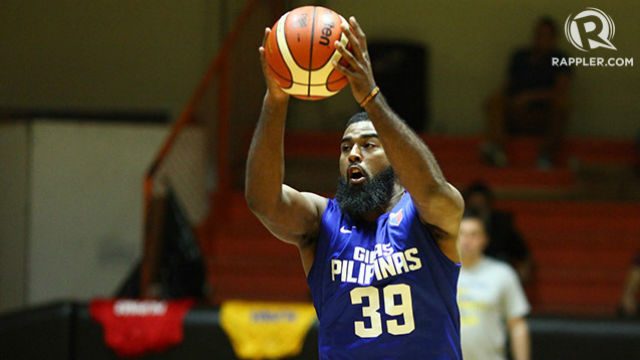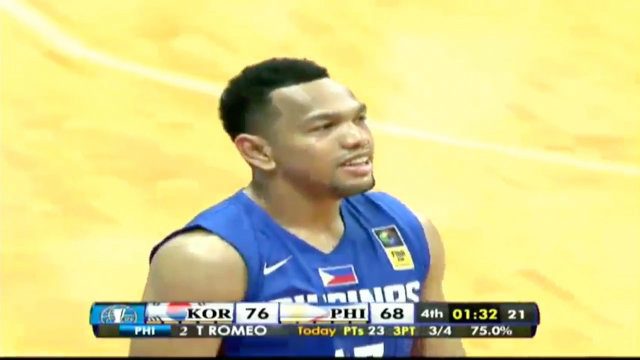SUMMARY
This is AI generated summarization, which may have errors. For context, always refer to the full article.

MANILA, Philippines – Gilas-Pilipinas currently stands at 1-1 in the 37th William Jones Cup tournament. After defeating Chinese-Taipei (blue) 77-69 to kick off their campaign with a bang, the national squad fell at the hands of their long-time rivals from South Korea, 82-70, on Monday, August 31. Their third game comes against Russia’s Spartak-Primorye, which has gone undefeated in 3 games.
While the product the Coach Tab Baldwin’s team put on the court these past two days is a far cry from what we can expect to see the team do come the bigger stage of the FIBA-Asia Championship at the end of September, there were still some lasting impressions left by key players and the system the 57-year-old coach is implementing.
Some of them good, the others, not so much. These notes could end up being a trend for the national team moving forward, but at the same time, they could also end up playing much different given the 6 more adversaries they’re going to face over the next few days.
So, what have we seen so far from Gilas 3.0?
Find the baseline cutters
This continues to boggle my mind.
One of the impressive offensive traits Gilas has done well so far is their ability to continuously swing the ball, have a perimeter player attack the paint, and then find a cutting big man on the baseline going to the rim. Sonny Thoss (who sat versus South Korea) and Marc Pingris reaped benefits from it against Taipei. Against the Koreans, it looked like Asi Taulava’s turn to do the same. But in both contests, Gilas went away from the working tactic in the second half, and it nearly led to a 0-2 record.
Using the play works, especially with the ability of Terrence Romeo, Calvin Abueva, and Jayson Castro to draw two to 3 defenders once they get close to the rim. Castro is already a talented passer. Romeo is improving each day. Abueva is getting there. But that beautiful swinging of the ball to find the open big man under the rim has stopped during critical moments, leading to more semi-contested jumpers.
Watching Romeo zig-zag and dance his way to midrange Js make for great entertainment, but remember, a close stab at the rim is always the higher percentage attempt.
(WATCH: Terrence Romeo puts on offensive exhibition vs Korea)
Abueva and Romeo: the dynamic duo Gilas badly needs
Whenever Romeo and Abueva are on the floor together, it always gives this sense that the national team is about to go on a game-changing run. And so far against South Korea and Taipei, that’s been the case.

When the two were inserted in the first game, it helped Gilas build a 16-point lead entering the half. When they came in during the second game, they turned a 44-41 lead for Korea to a 47-44 lead for Gilas.
Both effectively fill the type of pace that suits Gilas best: quick. Without Andray Blatche in the Jones Cup, the Philippine team has been at their best when they’re out and running. Abueva and Romeo are menaces to deal with on the open court. Both are fantastic penetrators and finishers in the half-court setting. On defense, they create havoc with active hands and pesky ability to body-up defenders. You can count both as shoe-ins for the final 12-man roster to go to Changsha, China.
Aggressive David
Against Taipei, Gary David went 1-of-5 from the floor for 2 points. Against South Korea, he scored 16 points on 5-of-11 shooting. Not only is that a drastic increase in scoring production; he also did it more effectively, and when a high-volume shooter like David scores more points than he has shot attempts, it’s always a plus for Gilas.
So, what was the difference? David played more a spot-up shooter role against Chinese-Taipei. There were instances where he would wait in one area for the ball to reach his hands, and instantly release it once he thought he had a shot.
The following day, however, he did a better job of reading how his defender was closing out on him. Only one of his triples were forced, while the other 4 were in rhythm and a product of good ball movement, such as this one from Romeo:
When he saw his 3-ball was about to be well-contested, he took a few extra dribbles and pulled up for the closer mid-range jumper instead. David is a streaky shooter. Once he sees a few attempts go in, it’s a good sign of the kind of game he’s going to have. By getting closer to the rim and searching for a better shot rather than forcing the situation, he helps himself get in the rhythm where he’s most lethal.
Tautuaa is going to be good. Very good
Moala Tautuaa is going to be an athletic freak of nature of the PBA – that’s something we all knew from what we heard about him and highlights off the PBA D-League. Although why he’s going to end up having a successful career goes beyond how high he jumps or how quick he gets from one end of the court to the other.

First, his body is ready for the pros. What the 6-foot-8 player lacks in height against June Mar Fajardo and Greg Slaughter is something he can make up for with brute strength and physique. Defending bigger opponents in the post so far in the Jones Cup, he’s managed to hold his ground and even irritate his counterparts by using his arms and chest to push them out of position. He battles on defense – a very good trait for a rookie that Talk ’N Text fans will surely admire once the 41st PBA season kicks off.
He’s already missed 3 3-pointers so far in the Jones Cup, but his form looks good, the arc of the shot looks adequate, and his body goes straight up during his attempts which shows that he’s already got good balance. He has the makings of someone who’s at the least going to have a reliable jumper in the pros, so fans of San Miguel, Star, Ginebra, Alaska, and other PBA teams have every reason to be worried.
There are only two things going against Tautuaa, albeit they’re minimal issues. He’s already 26-years-old, so that athleticism can falter after 5 to 6 years. He’s already in the prime of his physical shape, and given that the PBA has to go through Fajardo for the foreseeable future, it’s no coincidence Talk ’N Text selected him first overall.
Tautuaa also needs to dial down the aggressiveness. He fouled out against Chinese-Taipei and then picked up 3 quick calls against South Korea in his first 5 minutes of action. To be fair, some of the fouls called against him will be the types he can get away with in the more physical PBA, but he needs to do a better job of picking his spots.
Managing minutes better
Speaking of picking spots, Baldwin needs to do a better job of dealing with his rotation. Gilas was locked in a close, back-and-forth battle against South Korea until their opponents’ backbreaking 9-0 run midway through the fourth period that essentially gave them the victory. The most important factor during that stretch? Both Romeo and Abueva were on the bench.

Once the two were out, Gilas committed costly turnovers that led to easy points and at times looked lost on offense. Ball movement was minimal, a lot of contested jumpers were taken, and easy laups were missed. Castro was on the floor during that period, but the inability of the other 4 guys on the floor – JC Intal, Gabe Norwood, Tautuaa, Ranidel De Ocampo – to create something off the dribble allowed the Koreans to pressure him into giving up the handle and put someone else in an uncomfortable position.
Either Romeo or Abueva should have been around to ease the burden on Castro. In Baldwin’s defense, giving the two a breather for the stretch run is an understandable idea, but those little decisions on how long you keep someone out of the game for a quick rest could end up making or breaking the outcome for your team. Against South Korea, it cost Gilas dearly. – Rappler.com
Add a comment
How does this make you feel?
There are no comments yet. Add your comment to start the conversation.